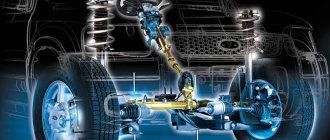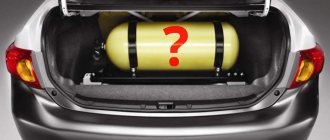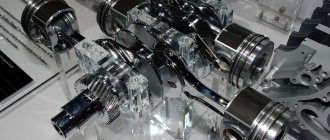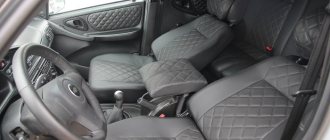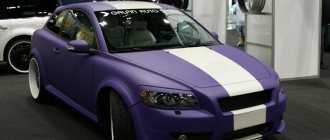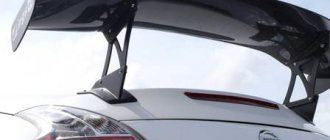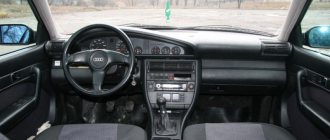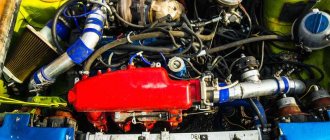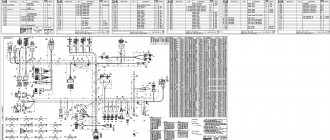Long gone are the days when car owners, in order to perform tuning, had to use mechanical intervention to change individual components of the structure. Now everything is a little different. In order to change unsatisfactory parameters of the engine and some systems, you must have special equipment and a laptop with you. Probably every owner of a modern car is interested in knowing how chipping of a car engine is done?
Chip tuning: how not to ruin your car?
The entire tuning fraternity works according to general laws, and the consequences of interference in the working processes of engines are identical.
We will look at the positive and negative aspects of chip tuning using the example of Volkswagen cars - they are most often subject to retuning. In order not to be scattered, we will focus on the most popular version of chip tuning - when they interfere only with the electronics and do not affect the hardware. We will focus on turbo engines, since reflashing them allows you to increase power and torque by 30–50%. For atmospheric ones, the increase most often does not exceed 10%.
What should you consider when you want to upgrade your engine?
- The most effective tuning is done immediately after purchasing the car, while it is still new.
- Do not break the factory program until the entire machine system has been diagnosed.
- Find out in advance whether tuning is possible in principle on your ECU. If it was initially blocked from hacking, even with the help of the most advanced equipment, it will not be possible to upgrade it.
- Look for information about the current software on your car; there may be no re-chip required. For some foreign cars, suitable options are very often selected and there is simply nowhere to improve them. In this case, you will waste time and money, and there is also a high probability of errors occurring after the procedure.
The cream of power
Chip tuning allows you to enjoy the behavior of an invigorated car not only on track days, but also in the everyday bustle of big cities. Among the bonuses are a reduction in “thoughtfulness” and dampened reactions to pressing the gas pedal, which almost all mass-produced models now suffer from, and improved adaptation to the quality of a specific type of fuel: some companies offer two types of firmware - for example, for 95 and 98 th gasoline.
High-quality chip tuning does not increase fuel consumption. Moreover, in some driving modes, especially if the engine is diesel, its savings are possible: 5–10%. Fantastic? I had the opportunity to measure fuel consumption on a new generation chipped diesel Tiguan. The actual reduction in the mixed cycle was 300 ml (measured using the top-up method using measuring cups). It is explainable. The highest instantaneous consumption occurs in transient and acceleration modes. When accelerating, the chipped engine has more torque at the same speed, and the gearbox holds lower gears longer. The car accelerates faster, but consumes no more fuel than with standard firmware.
Such benefits are difficult to obtain when installing cheap programs for garage workers or “desktop chip” enthusiasts. Usually they add power and torque to the engine in the “on/off” mode (when you press the gas pedal). Calibrators change a limited number of parameters without bothering to check the programs under real road conditions. As a result, the car is more suitable for the race track - it becomes uncomfortable to drive in the city due to the abundance of kicks, jerks and jerks in various modes.
Converter, particulate filter, EGR
A dubious idea is removing particulate filters. Few people will like it when a modern diesel passenger car starts to smell like an ancient KAMAZ. In addition, this operation requires a lot of experience: you need to competently “fool” the control program so that it does not bother you with messages about all sorts of errors. On the other hand, an abandoned particulate filter will clog faster (even with good software, its regeneration intervals are reduced). This means that a critical mass of deposits remaining after burning the soot will quickly accumulate in it.
Due to an increase in the flow of exhaust gases, the neutralizer of a gasoline engine will clog earlier. And this is with a well-designed program. And cheap software can even lead to rapid melting of the neutralizer honeycombs. Therefore, large foreign companies do not touch engine environmental systems at all. After all, they make software for the global market, and emissions standards in many countries are quite strict.
Transmission
With mechanics, first of all, the clutch life is reduced. And if the driver likes to participate in traffic light races, the filling is also given away - synchronizers, gears, bearings.
Robotic boxes, which are structurally similar to conventional mechanics, suffer in much the same way. The resource of double clutch (dry or wet) is reduced by an average of one and a half times. Due to active starts from a standstill, not only gears and bearings quickly die, but also differential housings. Tuning software does not harm the health of mechatronics only.
In automatic machines, when the permissible torque is exceeded, there is not enough pressure in the clutch packs to withstand it. They begin to slip more actively, and wear products quickly kill the remaining elements of the box.
Measure seven times
Large chip tuning companies take the testing of the software they develop very seriously. For example, American companies spend only a fifth of their time on bench testing (on dynos) of cars with new firmware, and the rest is spent on road tests. At the same time, they use the resources of their dealers around the world, including in Russia, and ultimately prepare several firmwares - for different markets, taking into account the local characteristics of the operation of the machines.
We would like to thank APR Russia for their assistance in preparing the material.
Source
Engine chip tuning: pros and cons
Chip tuning is a procedure for tuning a car engine and other systems, which allows you to improve the characteristics and properties of the vehicle as a whole. This process affects the operation of the ECU (electronic control unit) and makes it possible to increase engine power, reduce fuel consumption and upgrade other parameters.
What is engine chip tuning and why is it needed?
Chip tuning of an internal combustion engine (ICE) control unit is a procedure for reinstalling software on the module. Each microprocessor is equipped with firmware, that is, an operating system that controls it. Using this utility, the main characteristics and operating parameters of the power unit and other important car systems are regulated.
There are three ways to chip tuning firmware:
– economical, allowing to reduce fuel consumption;
– power, making it possible to increase the torque of the motor;
– normalized, allowing to reduce fuel consumption, slightly increase engine power, improve the smooth functioning of the unit, etc.
Increase in car engine power by approximately 10-40% depending on the type of power unit and software version.
Ease of chip tuning. To complete the task, the user does not need to penetrate the design of the power unit; all actions are performed using a computer, program and wire. Accordingly, if the user does not like the modernization of the car, you can always “roll back” the firmware to the factory settings.
There are many opportunities to improve the operation of vehicle systems. The user can either add power or reduce fuel consumption.
Possibility of simplified movement on a loaded vehicle, as well as increased comfort when moving.
Possibility to remove the particulate filter. This idea is generally questionable, since then the vehicle will smell unpleasant, and removing the device at the software level is not easy. The control unit will regularly remind the user of errors. However, a particulate filter left in a car quickly becomes clogged, and a large mass of deposits accumulates in it, which remain after burning off the soot.
Failure of the motor and rapid wear of its structural elements. Firmware of the control unit, performed unprofessionally, will contribute to engine damage.
With an increase in power characteristics, fuel consumption can increase by 20-50%.
Faster wear of structural components of the exhaust system, in particular, melting of the catalyst (when operating in 2-3 gears, the temperature of the device is up to 600 degrees, and with incorrect chip tuning it can increase to 900 degrees).
On vehicles with an installed automatic or CVT transmission, chip tuning is especially harmful, since the gearbox can quickly fail. This also applies to mechanical units, since each device is designed for a certain torque. If in the case of an engine its increase is not so critical, then in the case of a gearbox the working shaft may fail.
How does it affect engine life?
Chip tuning is recommended for the following types of power units:
Turbocharged. For motors of this type, the procedure for improving parameters and characteristics is most effective - engine power can actually be improved by 20-25%. Depending on the type of engine (diesel or gasoline), with the right approach and using a working firmware version, this parameter can be increased by 30-40%.
Diesel. In this case, it is also possible to achieve a serious increase in power, in particular when it comes to a turbodiesel. The amount of torque can increase by about 30%, and the amount of horsepower by 25%.
Atmospheric. Such engines are subject to chip tuning, but the result is much more modest - the power of the power unit can be increased by no more than 9-10%.
Engines equipped with gas cylinder equipment. The use of appropriate equipment makes the chip tuning process a necessity. The transition of a vehicle to gas fuel leads to changes in many characteristics and parameters in the operation of the engine.
Possible consequences of self-installation
Errors made during the chip tuning process or incorrect installation of software are fraught with the following problems:
Standard engine settings
By loading certain settings into the engine's electronic control unit, many car manufacturers deliberately make the engine less powerful. There are many reasons for this, the main ones being an increase in the service life of the power plant and a reduction in emissions of harmful substances into the atmosphere.
Naturally, the wishes of many drivers differ greatly, because some want a fast car, while others prefer economical driving. Therefore, standard engine settings do not satisfy all the needs of car enthusiasts.
To chip or not to chip a car engine
Today, every car enthusiast is familiar with the concept of chip tuning. Literally this means “chip tuning”. As you know, modern engines have an electronic control system that fully controls fuel injection, ignition and the operation of other internal combustion engine systems.
This setting involves making certain changes to the control program, which is “hardwired” into the ECU memory. A complete replacement of the program with a modified one can also be implemented. In some cases, it is practiced separately to install additional modules (the so-called chip and tuning boxes).
It would seem that this method is a well-known and affordable solution, but not everyone thinks about whether chip tuning is harmful to the engine. In this article we intend to talk about how engine chipping affects the internal combustion engine, the consequences of such an operation, and also why for many civilian cars there is no need for such modification in practice.
What parameters change
After chip tuning (stage 1 and beyond), a number of calibration parameters stored in the ECU memory will be subject to change. The number of changes can reach 20, and in the case of certain firmware versions it can be more. First of all, the following are corrected:
- Excess factor;
- Bypass valve operating parameters;
- Calibration factors;
- Valve timing.
To better understand the extent of the changes in the ECU memory, here is a partial list of changes in diesel engine management. After stage 1 the following are changed:
- Gearbox switching time;
- Turbo limiters, turbine pressure and its duty cycle;
- Injection start time:
- Limiters of torque, temperature, smoke;
- Throttle valve opening parameters and sensitivity;
- Lambda probe monitoring;
- Main pressure.
As stated in the previous section, after chip tuning the engine can be used to its fullest, which affects its service life. If high-quality, thoughtful tuning was carried out in accordance with the capabilities of the power unit and transmission, there is nothing to fear - the driver uses the full potential of the engine in rare cases. For most of the operating period, the load on the unit is only partial. Usually, with incorrect chip tuning and attempts to squeeze the maximum out of the car, the gearbox is the first to suffer (the specified torque is inadequate), but the engine also suffers. Interesting fact: despite a small increase in power after flashing the naturally aspirated engine control unit, the car still becomes more “vigorous”. This is due to a significant increase in torque, which becomes especially noticeable in the zone up to 4000 rpm. The overall dynamics are also improving, but environmental performance is getting worse.
Engine chip tuning: pros and cons
So, today you can reflash an electronic control unit almost everywhere, and inexpensively. Let us immediately note that, as a rule, drivers are not always interested in the qualifications and professionalism of the craftsmen. The main thing is that after modification, the owner feels the promised improvements and is satisfied with the final result.
To make a noticeable difference, you need to make sure that the feeling of acceleration changes. Let us note right away that overclocking is not maximum power. In other words, after chip tuning, the driver at the start feels the “horses” not added to the engine. In fact, along with the power, the torque of the internal combustion engine also changes at different speeds, which the transmission then converts into traction on the wheels. It is the torque characteristic that determines the intensity of acceleration of the machine.
In other words, a whole team of auto engineers works on the firmware for each car model with a specific engine. A huge number of different parameters must be taken into account. Taken together, the result makes it possible to achieve acceptable engine performance in various modes, the desired output from the internal combustion engine while preserving its service life, efficiency, environmental friendliness, etc.
However, when creating firmware, engineers set, let’s say, somewhat average parameters. It is for this reason that chip tuning allows you to change settings. For example, you can change the ignition timing. As a result, at the end of the compression stroke, the mixture ignites and an increased gas pressure is created on the piston, and the torque also increases.
Let us also add that different engines have an individual reserve of resistance to detonation. If on some engines a change in the SOP takes place without obvious consequences, on others such manipulations can quickly damage the internal combustion engine. It is also important to understand that changing the ignition timing does not manifest itself throughout the entire speed range.
Usually, at high speeds, changing the SOP does not produce results, that is, power and torque do not increase. This means that the maximum speed actually remains the same. At the same time, an improvement in dynamics can be observed at low and medium speeds, which is usually enough for most ordinary car enthusiasts.
What is chip tuning
When developing engines at the factory, they are not always boosted to full power. When determining the boundaries of safe operation, manufacturers take into account the vehicle's compliance with environmental standards. If there is no compliance, the car will not pass certification and will not go on sale, or the manufacturer will have to pay additional taxes.
The engine is controlled by an electronic control unit (ECU).
Due to such a computer, the air supply, fuel supply, ignition timing and other characteristics are adjusted. On a note!
No matter how much power there is in the engine, after a certain time you get used to it, and after six months you will want to increase it.
Chip tuning is firmware or microprogram that changes engine control and increases its power. This replacement of the ECU program allows you to adjust the factory parameters of the internal combustion engine. Engine firmware allows you to make it more powerful and at the same time keep fuel consumption the same.
The maximum jump in power is typical for gasoline and diesel calibrated engines. On naturally aspirated engines the changes are minor. As a rule, they are chipped to remove minor delays and the catalyst.
Chip tuning of a diesel engine or gasoline engine: impact on the resource of the internal combustion engine
It is quite obvious that even if all the firmware and configuration operations are performed correctly, an increase in power and torque will one way or another mean wear and tear on the internal combustion engine.
First of all, accelerated mechanical wear of loaded elements and friction pairs occurs (piston ring and cylinder walls, connecting rod and main bearings at the junction with the connecting rods, crankshaft, in the crankshaft bed in the BC, etc.)
For example, the operation of a piston ring in a cylinder has the following features. While the fuel in the cylinder is not burning, the rings experience minimal stress. The piston ring wall is parallel to the cylinder wall. However, at the moment the fuel ignites, a pressure surge occurs, as a result of which the ring in its groove begins to twist under the load.
As for the liners, as well as supporting elements, in addition to friction, the parts are also affected by the so-called radial deformation. In simple words, the shape of the holes changes. It is quite obvious that gaps form in friction pairs and shock loads appear. The inserts simply break, and they can also be turned.
So, chip tuning allows you to change the parameters that were configured at the factory. As a result, torque and power increase, but at the same time the loads in the most important components of the internal combustion engine also increase. Naturally, the wear balance predicted by the engine designers will also be disrupted.
It is worth adding that such processes affect not only the internal combustion engine, but also the gearbox. At the same time, the catalyst and oxygen sensor can fail faster. The service life of engine and transmission oils is also reduced, meaning lubricants need to be changed more often.
On many engines, in addition, oil consumption increases due to waste. The cooling system of the internal combustion engine, which works more intensively as a result of the increase in power, also experiences additional loads. For this reason, you need to monitor the performance, quality of antifreeze and cleanliness of the cooling system channels.
How to properly chip an engine and operate a flashed motor
It becomes clear that for competent chip tuning you need to have special equipment, as well as extensive access to technological maps of the engine. Much will depend on the experience and qualifications of the specialists themselves.
The fact is that changing any parameter (for example, ignition timing or injection) leads to the fact that other parameters will also require correction. Moreover, this should be done only taking into account a full understanding of the process and various nuances. Only this approach makes it possible to obtain an increase in power and torque with minimal damage to the internal combustion engine.
The reason is that all systems remain standard, but their performance reserve is not always enough to cope with the additional power without consequences for the engine.
It turns out that the engine life depends not only on the firmware and qualifications of the tuners, but also on the driver himself. If we take into account that even a stock engine with factory firmware will fail faster under heavy loads, then it is clear that a constantly loaded chipped engine will fall into service even faster.
In other words, the driver does not need to constantly use the additional capabilities of the unit that appeared after the firmware. It is also important to understand that if the engine is worn out and has lost power, it is forbidden to try to improve the performance of the internal combustion engine by changing the program of the control unit. In this case, serious malfunctions are likely to quickly appear.
Chip tuning technology
First, you need to download the existing firmware version from the car, and then modify it as necessary. And it takes quite a long time to write it back.
Sometimes, in order to complete the work and perform all the necessary manipulations, you have to remove the control unit. Therefore, special locksmith tools are required.
The object for modernization, as you may have already understood, is the ECU; all main actions are performed directly with it.
The latest ECUs are produced without an external flash memory unit; the program itself is implemented directly into the processor memory. But early versions are still equipped with external memory; naturally, it is necessary to collect all the information about a particular case in advance.
The control program consists of a bootloader, it controls the startup process and firmware update, the main motor control program and calibration programs.
When using a bootloader, you can update all components of the control unit. If errors occur after installation, you must open the new software with a calibration editor, for example, “CTPro”, and save it, and then try to write it to the control unit again.
But there is also a universal version of the programmer, which itself updates the on-board computer without the participation of a wizard, for example, “CombiLoader”. This program allows you to edit the software through “Chip Tuning Pro” if necessary. But unfortunately, it does not fit all ECUs.
It should be noted that the chip tuning process is quite complex and time-consuming. Most often, the re-chip process takes about 2–4 hours for an experienced tuner. But if a newbie gets down to business, the procedure can drag on for a long time. To understand the whole process, if you don’t have some experience, it will take at least several months.
https://www.youtube.com/watch?v=ieQcWsbU2as
